
Weathering (Part 3)
Chemical Weathering
Chemical weathering, or decomposition, changes original rocks into new material with different compositions. Several processes cause chemical weathering: dissolution, hydrolysis, and oxidation.
Dissolution
• In dissolution, water breaks down mineral grains into the elements that make them up.
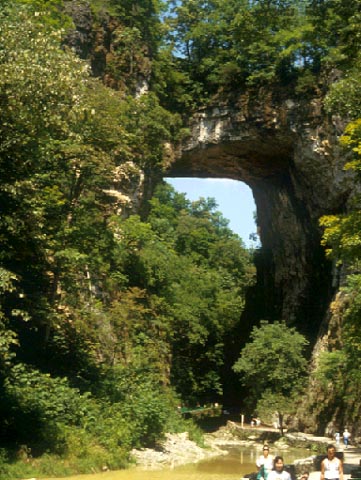
Natural Bridge (Photograph by Robert Whisonant)
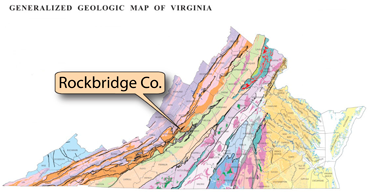 Natural Bridge, in Rockbridge County, is a spectacular example of dissolution. The carbonate rocks that make up the bridge have been dissolved away by groundwater and surface water, leaving the bridge.
Natural Bridge, in Rockbridge County, is a spectacular example of dissolution. The carbonate rocks that make up the bridge have been dissolved away by groundwater and surface water, leaving the bridge.
Hydrolysis
• In hydrolysis, elements in water (hydrogen and oxygen) replace elements in the original material, creating a new substance.
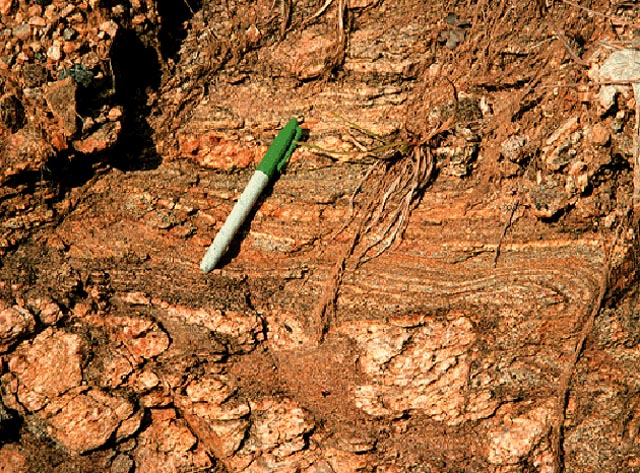
Granite gneiss is converting to clay by hydrolysis in Buckingham County (Photograph by the Division of Geology and Mineral Resources)
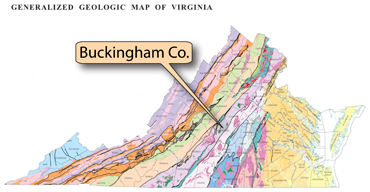 This deeply weathered granite gneiss in Buckingham County has been weathered by hydrolysis. Feldspar-rich minerals are becoming soft clays.
This deeply weathered granite gneiss in Buckingham County has been weathered by hydrolysis. Feldspar-rich minerals are becoming soft clays.
Oxidation
• In oxidation, oxygen reacts with the original material to create new material. Iron minerals are especially likely to be oxidized.
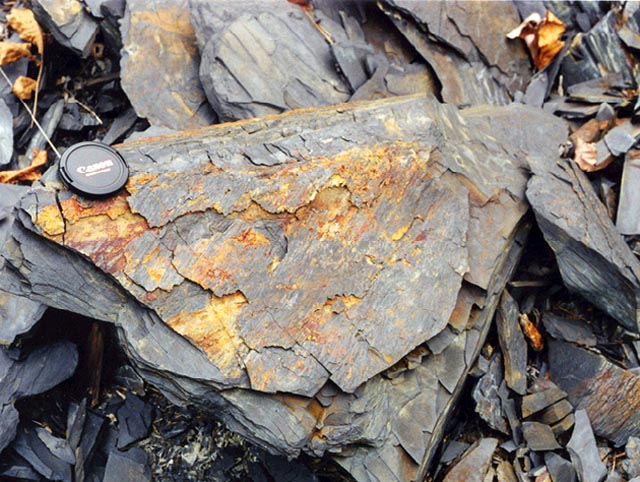
Oxidation taking place on shale in Highland County (Photograph by Stan Johnson)
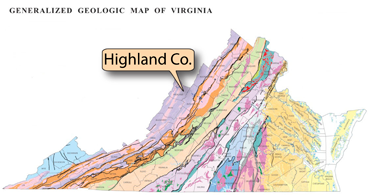 Oxidation is characterized by red, orange, and yellow stains that look like rust. These Highland County shales show evidence of oxidation.
Oxidation is characterized by red, orange, and yellow stains that look like rust. These Highland County shales show evidence of oxidation.